Toyota Estima
The RHD Toyota Estima minivan went by the Previa name in the US. It’s sleek minivan shape means good gas mileage and lots of cargo space — perfect for rural letter carriers in the US. Read on to discover more.
Jump To Section
Introduction
The RHD Toyota Estima (also known as the Toyota Previa in its LHD form in the US) burst onto the scene in 1990. With its then-futuristic design and innovative engineering, it quickly became a favorite among Japanese families. Combining the spaciousness of a full-size van with slippery, futuristic looks, the Estima set a new standard in the minivan segment.
History and Development
Background and Inspiration
In the late 1980s, Toyota aimed to create a groundbreaking minivan that offered unmatched space and comfort. Led by Hiroshi Minagawa, the engineering team at CALTY (Toyota’s US design base)envisioned a vehicle that blended the practicality of a van with the driving dynamics of a car. The result was the Estima, featuring a rare mid-engine, rear-wheel-drive or 4WD layout. This configuration allowed for a flat floor that maximized interior space.
Key Design and Engineering Goals
The first-generation Estima was defined by its aerodynamic, egg-shaped body, which improved fuel efficiency. The mid-engine layout, with the engine placed beneath the front seats, enhanced weight distribution and lowered the center of gravity for better handling. The innovative “one-motion” sliding door provided easy access to the rear seats and cargo area. With seating options for seven or eight passengers, the Estima was a firm family favorite in Japan.
Key Design and Engineering Goals
The Toyota Estima debuted at the 1989 Tokyo Motor Show, drawing crowds because of it’s bold, unique design and features. Officially launched in Japan in 1990, it quickly gained popularity. Families and businesses alike appreciated its spacious interior and smooth ride. The Estima’s versatility made it ideal for daily commutes and leisure trips. Throughout its production from 1990 to 2000, the first-generation Estima received several updates, reflecting Toyota’s dedication to continuous improvement.
Key Features
Engine and Performance
Engine Types and Configurations
The first-generation Toyota Estima came with a range of engine options to cater to different needs. The primary engine was the 2.4-liter 2TZ-FE inline-four, which provided a good balance of power and efficiency. For those seeking more performance, a 2.2-liter 3C-T turbo diesel engine was also available. Both engines were paired with either a 4-speed automatic or a 5-speed manual transmission, giving drivers flexibility in their driving experience.
Performance Specifications
The 2.4-liter 2TZ-FE gasoline engine produced 135 horsepower and 145 lb-ft of torque, but the super-charged (yes, you read that correctly) 2TZ-FZE gasoline engine pumped out 158 horsepower and 190 l-ft of torque. A supercharger functions in a similar way to a turbo-charger, but takes its power directly from the engine itself, rather than from the exhaust gases.
Fuel Efficiency
Its slippery form made the Toyota Estima known for its relatively good fuel efficiency, especially given its size and versatility. Although not that great in today’s world of hybrids, the 18 to 20 mpg these minivans could achieve was excellent for the time, and is certainly far ahead of the XJ Jeep Cherokee models that have been the go-to RHD solution for rural carriers for so long.
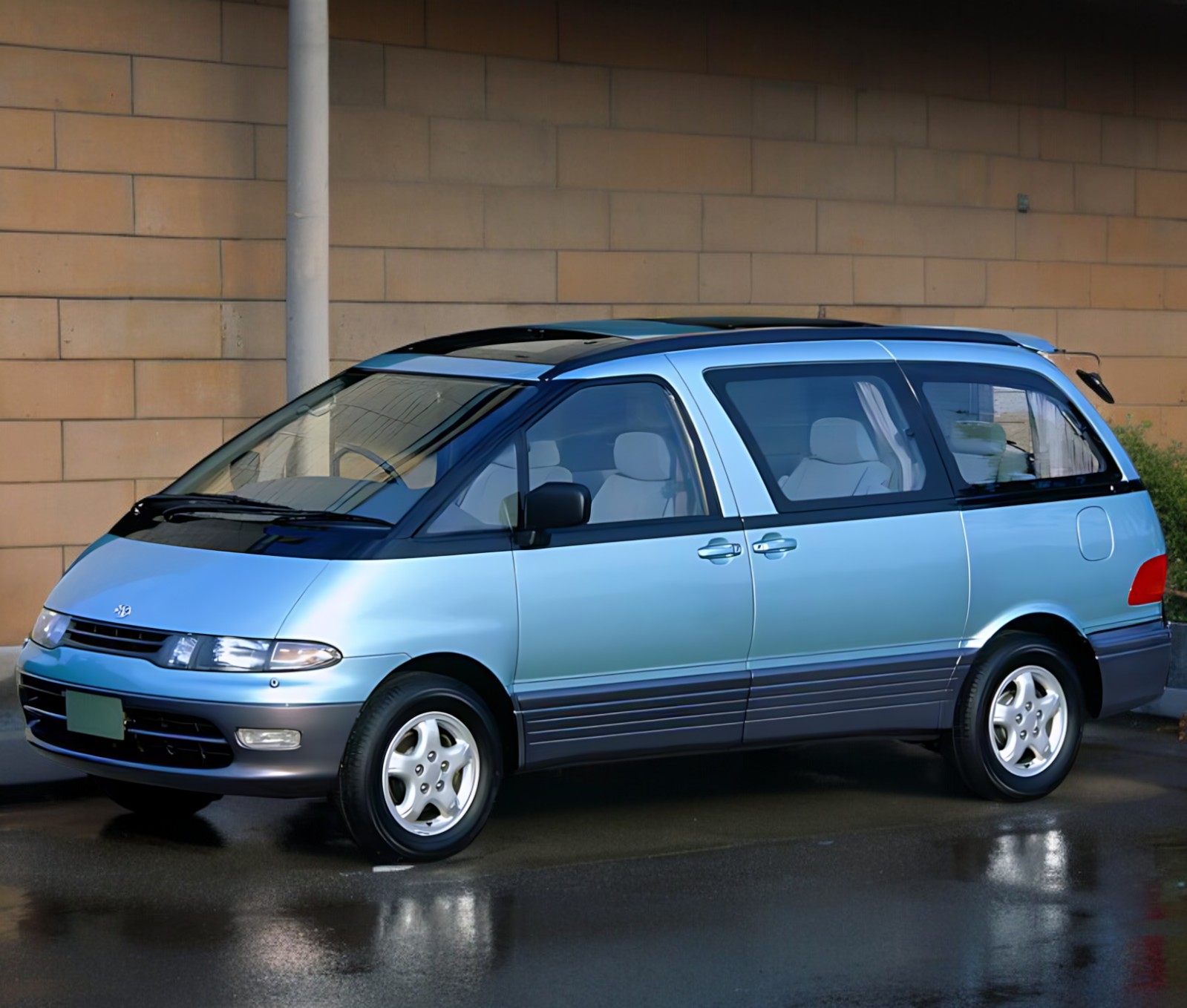
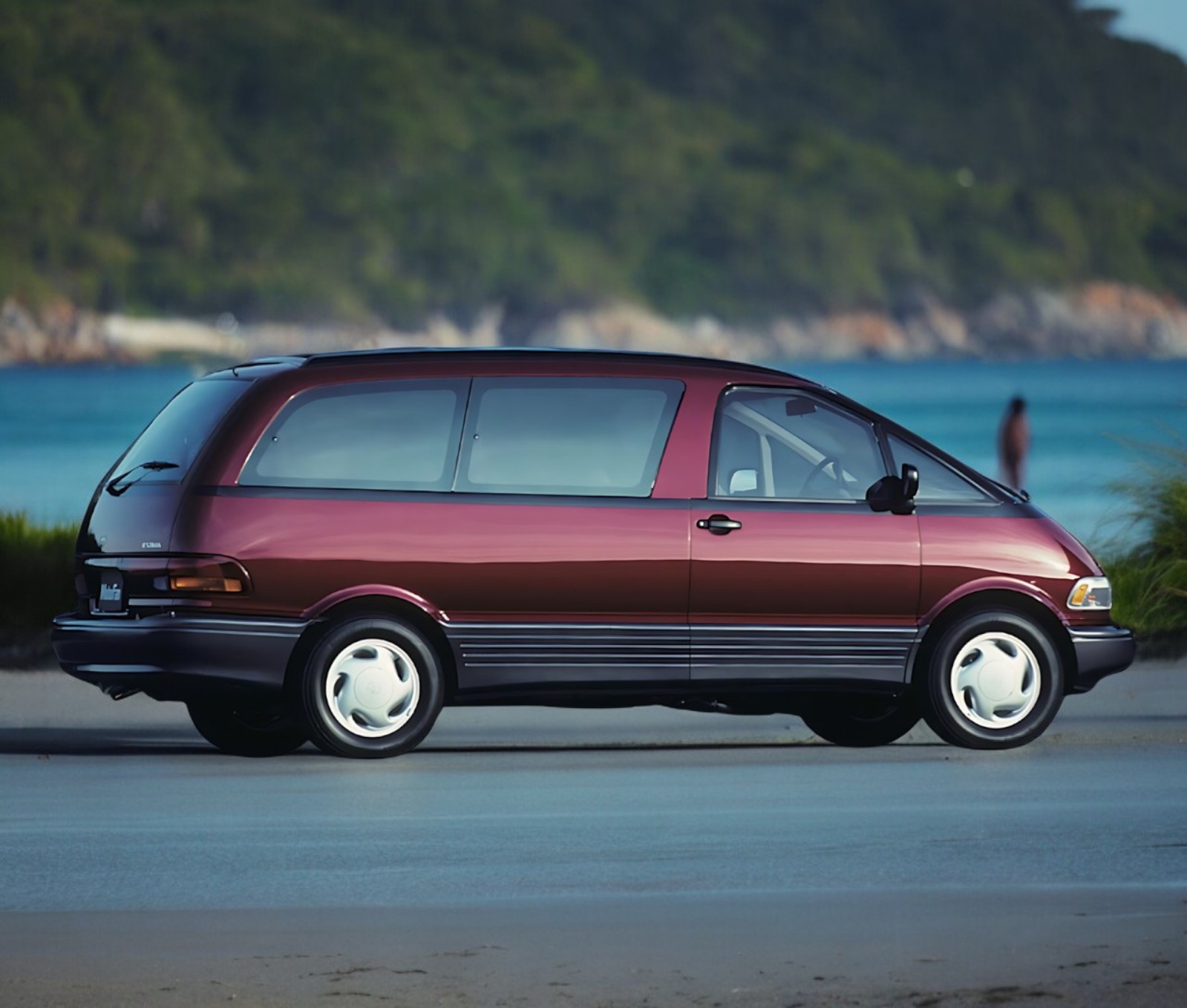
Interior and Comfort
Seating Capacity and Layout
The interior of the first-generation Estima could accommodate up to seven or eight passengers, depending on the seating configuration. The seats were arranged in a way that allowed for easy access and maximum use of space. In fact the middle row could swivel to face the rear seats, creating a cozy, lounge-like atmosphere, which was a unique feature at the time.
Comfort Features
Toyota equipped the Estima with several comfort features to enhance the driving experience. These included air conditioning, power windows and locks, and adjustable seating. Higher trim levels offered additional amenities such as premium upholstery, a sunroof, and an advanced audio system.
Cargo Capacity
Cargo Space with and without Seats Folded
The Estima’s cargo capacity was one of its standout features. With all seats in place, it offered ample space for everyday items with 23.66 cubic feet of space behind the rear seats. However, when the rear seats could be folded down to create a flat load floor, the cargo capacity increased to 62.93 cubic feet. But that’s not all! If you remove the bench middle seats and have a frankly amazing 158 cubic feet of storage space.
Safety Features
Standard Safety Features
Safety was a priority for Toyota, and the Estima came equipped with several advanced features for its time. Standard safety equipment included dual front airbags, anti-lock brakes (ABS), and side-impact protection beams. These features provided a good level of protection for occupants, contributing to the Estima’s reputation as a reliable and safe minivan. Additionally, the vehicle’s design and build quality further enhanced its safety credentials, making it a trusted choice for families.
Japanese Market Appeal
Popularity and Reception in Japan
The first-generation RHD Toyota Estima, launched in 1990, quickly captured the attention of the Japanese market with its innovative design and practicality. Marketed as the “genius egg”, the Estima stood out from other vehicles of its time due to its distinctive egg-shaped body and a mid-engine layout that was more typical of a Ferrari supercar than a minivan.
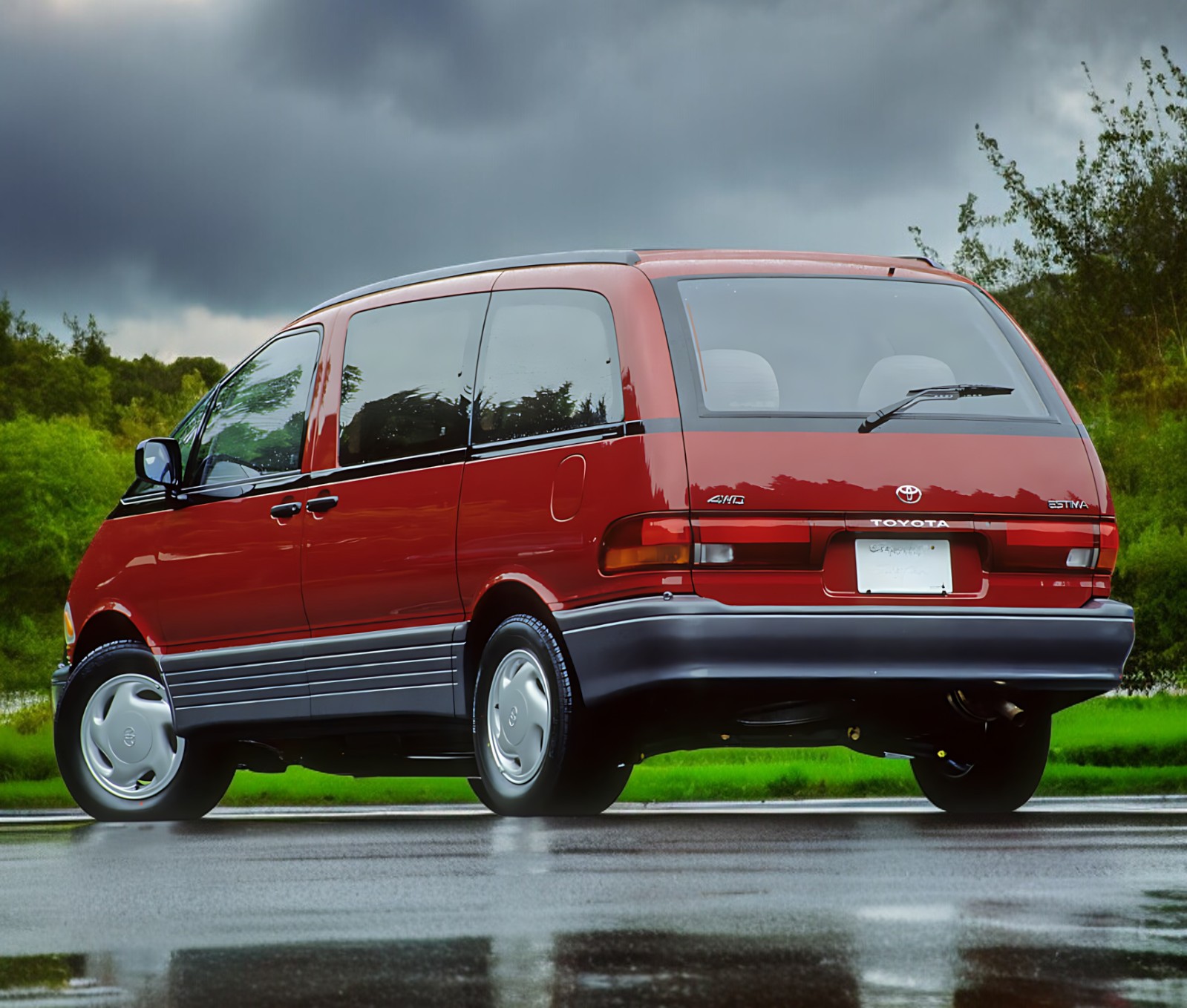
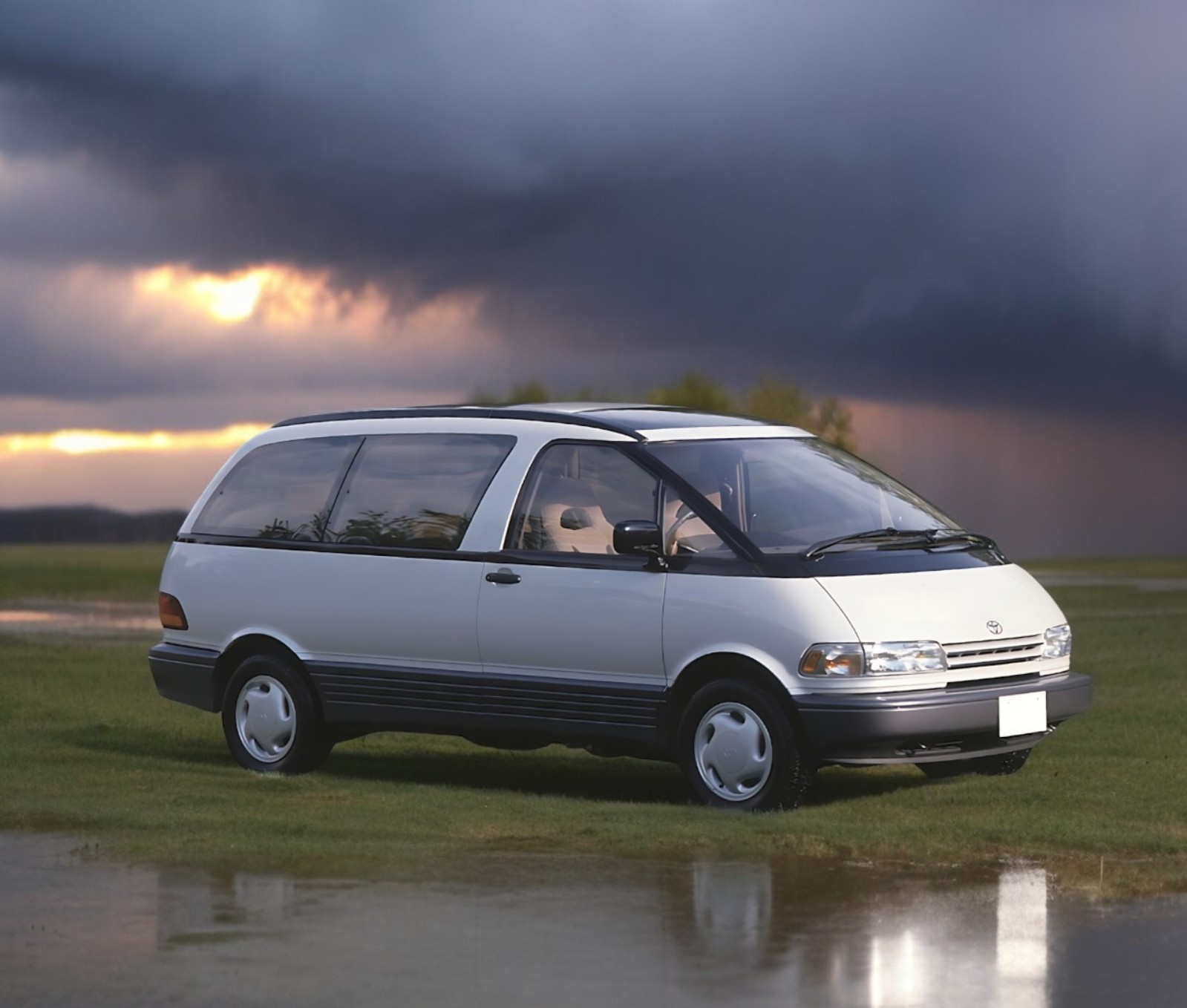
Japanese Owners’ Reviews
Interior Comfort and Versatility
In reviews, Japanese owners wrote they appreciated the spacious and flexible interior. The ability to reconfigure the seating to accommodate different needs was highly valued. Finally, many reviews mentioned how the seats could be tipped back almost flat, making long trips more comfortable for passengers.
Exterior Design
The unique egg-shaped design of the right-hand drive Estima was well-received both for its modern appearance and aerodynamic efficiency. Reviewers noted that this design helped the vehicle stand out among its boxy competitors and contributed to better fuel efficiency.
Driving Experience
Drivers praised the Estima’s smooth and stable handling. The low center of gravity and balanced weight distribution were cited as major factors contributing to its comfortable ride. The vehicle’s advanced suspension system provided a pleasant driving experience, whether in urban driving, or on longer highway journeys.
Reliability and Build Quality
Owners consistently praised the Estima in their reviews for its reliability and build quality. They noted that it continued to perform well over many years with regular maintenance. The durability of the engine and overall construction reinforced the Estima’s reputation as a dependable and long-lasting minivan.
Common Maintenance Tasks and Costs
Maintaining the first-generation Toyota Estima involves several routine tasks, including regular oil changes, brake pad replacements, and timing belt changes. The engine’s mid-ship layout requires careful attention during maintenance, especially when accessing components for service, on the other hand, the overall design ensures these tasks remain straightforward and manageable with proper tools and expertise. Costs for these maintenance tasks are generally reasonable, with oil changes being relatively inexpensive and timing belt replacements being more costly but infrequent.
Long-Term Reliability and Durability
The Toyota Estima is praised for its long-term reliability and durability, with the longevity of the 2.4-liter 2TZ-FE engine often highlighted. The Estima’s design allows it to handle significant mileage with minimal issues.
Availability of Parts and Ease of Maintenance
Parts for these first-generation Estimas are generally available and reasonably priced, thanks to Toyota’s extensive parts network and the fact that RHD Estimas were sold in LHD guise as Previas in the US. Your local Toyota dealership will recognize and be able to help you with your RHD model even though it wasn’t originally sold in the US. While the mid engine layout can present some challenges, experienced mechanics won’t find it an issue.
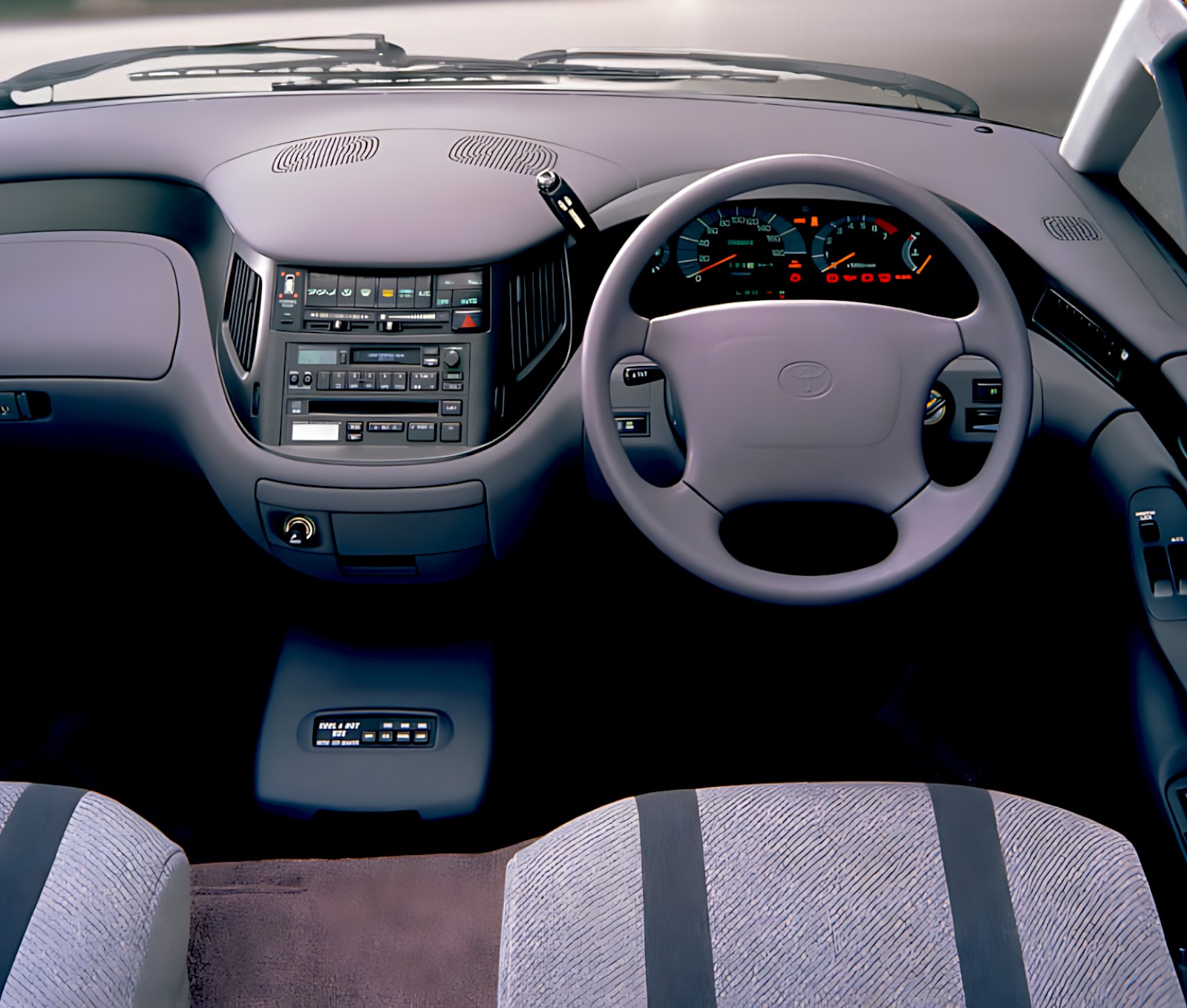
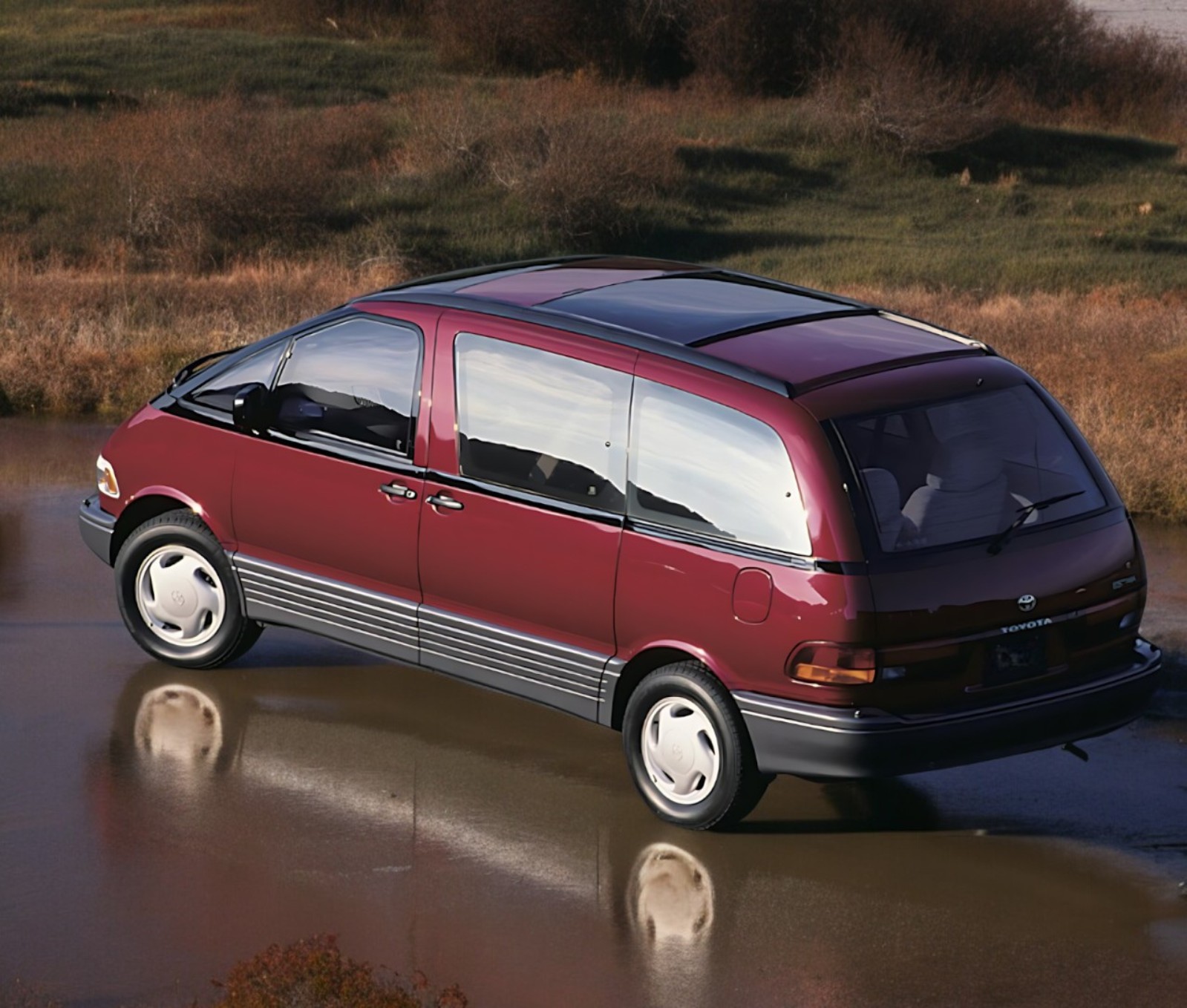
Specifications
Engine Options
- 2TZ-FE: A 2.4-liter inline-four engine producing 133 horsepower at 5000 rpm and 151 lb·ft of torque at 4000 rpm.
- 2TZ-FZE: A supercharged variant of the 2.4-liter inline-four engine, producing 158 horsepower.
Transmission Types
- 4-Speed Automatic Transmission (Most popular)
- 5-Speed Manual Transmission.
Drive Configurations
- Rear-Wheel Drive (RWD): The primary drive configuration, benefiting from the mid-engine layout for better weight distribution and handling, as well as enhanced fuel economy.
- All-Wheel Drive (AWD): Available as an option for enhanced traction and stability.
Seating Capacity
This first generation Estima was designed to accommodate seven or eight passengers, depending on the seating configuration. Seats could be folded flat to increase cargo capacity.
Dimensions and Weight
- Length: 187 inches
- Width: 70.9 inches
- Height: 70.1 inches
- Wheelbase: 112.6 inches
- Weight: Between 3704 lbs and 4189 lbs depending on the configuration.
Conclusion
Ground-breaking both for its exterior ‘teardrop’ shape, and its unusual mid-engine layout, the right-hand drive Toyota Estima is a great choice for postal workers because of its size, cargo capacity, 4WD capabilities, driving comfort, and similarities to the LHD US-market Toyota Previa, with which it shares many similarities.

